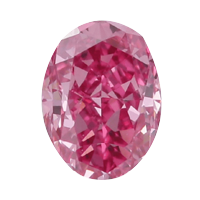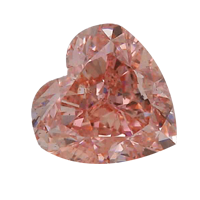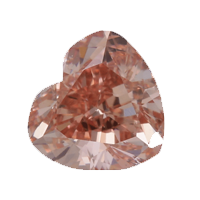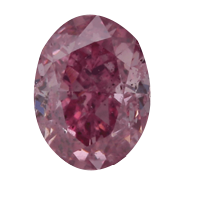
education
(1) Basics Of Diamonds
This basic knowledge will not only unlock the mystery of a diamond’s quality, it will help you understand a diamond’s value and price.
Each diamond is unique and is a miracle of time, place and change. And each has specific qualities that establish its value.
Until the middle of the twentieth century, there was no agreed-upon standard by which diamonds could be judged. GIA created the first, and now globally accepted standard for describing diamonds: Color, Clarity, Cut and Carat Weight.
Today, the 4Cs of Diamond Quality is the universal method for assessing the quality of any diamond, anywhere in the world. The creation of the Diamond 4Cs meant two very important things: diamond quality could be communicated in a universal language, and diamond customers could now know exactly what they were about to purchase.
(a) Color :
The diamond color evaluation of most gem-quality diamonds is based on the absence of color. A chemically pure and structurally perfect diamond has no hue, like a drop of pure water, and consequently, a higher value. GIA’s D-to-Z diamond color-grading system measures the degree of colorlessness by comparing a stone under controlled lighting and precise viewing conditions to master stones of established color value.
Before GIA universalized the D-to-Z Color Grading Scale, a variety of other systems were used loosely, from A, B, and C (used without clear definition), to Arabic (0, 1, 2, 3) and Roman (I, II, III) numbers, to descriptive terms like “gem blue” or “blue white,” which are notorious for misinterpretation. So the creators of the GIA Color Scale wanted to start fresh, without any association with earlier systems. Thus the GIA scale starts at the letter D. Very few people still cling to other grading systems, and no other system has the clarity and universal acceptance of the GIA scale.
Many of these diamond color distinctions are so subtle that they are invisible to the untrained eye; however, these distinctions make a very big difference in diamond quality and price.
(b) Clarity :
Diamond clarity refers to the absence of Inclusions and blemishes.
Natural diamonds are the result of carbon exposed to tremendous heat and pressure deep in the earth. This process can result in a variety of internal characteristics called ‘inclusions’ and external characteristics called ‘blemishes.’
Evaluating diamond clarity involves determining the number, size, relief, nature, and position of these characteristics, as well as how these affect the overall appearance of the stone. While no diamond is perfectly pure, the closer it comes, the higher its value.
The GIA diamond clarity scale has 6 categories, some of which are divided, for a total of 11 specific grades.
• Flawless (FL) : No inclusions and no blemishes visible under 10x magnification
• Internally Flawless (IF) : No inclusions visible under 10x magnification
• Very, Very Slightly Included (VVS1 and VVS2) : Inclusions so slight they are difficult for a skilled grader to see under 10x magnification
• Very Slightly Included (VS1 and VS2) : Inclusions are observed with effort under 10x magnification, but can be characterized as minor
• Slightly Included (SI1 and SI2) : Inclusions are noticeable under 10x magnification
• Included (I1, I2, and I3) : Inclusions are obvious under 10x magnification which may affect transparency and brilliance.
Many inclusions and blemishes are too tiny to be seen by anyone other than a trained diamond grader. To the naked eye, a VS1 and an SI2 diamond may look exactly the same, but these diamonds are quite different in terms of overall quality. This is why expert and accurate assessment of diamond clarity is extremely important.
(c) Cut :
Diamonds are renowned for their ability to transmit light and sparkle so intensely. We often think of a diamond’s cut as shape (round, heart, oval, marquise, pear), but a diamond’s cut grade is really about how well a diamond’s facets interact with light.
Precise artistry and workmanship are required to fashion a stone so its proportions, symmetry and polish deliver the magnificent return of light only possible in a diamond.
A diamond’s cut is crucial to the stone’s final beauty and value. And of all the diamond 4Cs, it is the most complex and technically difficult to analyze.

To determine the cut grade of the standard round brilliant diamond – the shape that dominates the majority of diamond jewelry – GIA calculates the proportions of those facets that influence the diamond’s face-up appearance.
These proportions allow GIA to evaluate how successfully a diamond interacts with light to create desirable visual effects such as:
• Brightness : Internal and external white light reflected from a diamond
• Fire : The scattering of white light into all the colors of the rainbow
• Scintillation : The amount of sparkle a diamond produces, and the pattern of light and dark areas caused by reflections within the diamond
GIA’s diamond cut grade also takes into account the design and craftsmanship of the diamond, including its weight relative to its diameter, its girdle thickness (which affects its durability), the symmetry of its facet arrangement, and the quality of polish on those facets.
The distance from the bottom of the girdle to the culet is the pavilion depth. A pavilion depth that’s too shallow or too deep will allow light to escape from the side of the stone or leak out of the bottom. A well-cut diamond will direct more light through the crown. That’s why pavilion depth affect a diamond’s cut.
The GIA Diamond cut scale for standard round brilliant diamonds in the D-to-Z diamond color range contains 5 grades ranging from excellent to poor.
(d) Carat Weight :
Diamond carat weight is the measurement of how much a diamond weighs. A metric “carat” is defined as 200 milligrams.
The modern carat system started with the carob seed. Early gem traders used the small, uniform seeds as counterweights in their balance scales. The carat is the same gram weight in every corner of the world.
Each carat can be subdivided into 100 ‘points.’ This allows very precise measurements to the hundredth decimal place. A jeweler may describe the weight of a diamond below one carat by its ‘points’ alone. For instance, the jeweler may refer to a diamond that weighs 0.25 carats as a ‘twenty-five pointer.’ Diamond weights greater than one carat are expressed in carats and decimals. A 1.08 carat stone would be described as ‘one point oh eight carats.’
All else being equal, diamond price increases with diamond carat weight because larger diamonds are more rare and more desirable. But two diamonds of equal carat weight can have very different values (and prices) depending on three other factors of the diamond 4Cs: Clarity, Color, and Cut.
It’s important to remember that a diamond’s value is determined using all of the 4Cs, not just carat weight.
Some weights are considered “magic sizes” – half carat, three-quarter carat, and carat. Visually, there’s little difference between a 0.99 carat diamond and one that weighs a full carat. But the price differences between the two can be significant.
Diamonds Fluorescence :
Fluorescence is the visible light some diamonds emit when they are exposed to invisible ultraviolet (UV) rays. On a GIA diamond grading report, fluorescence refers to the strength, or intensity, of the diamond’s reaction to long-wave UV, which is an essential component of daylight. The light emitted lasts as long as the diamond is exposed to the ultraviolet source.
Approximately 25% to 35% of the diamonds submitted to GIA over the past decade, exhibit some degree of fluorescence. However, only 10% of those show strengths of fluorescence that may impact appearance (i.e., strengths noted on laboratory reports as medium, strong or very strong). In more than 95% of the diamonds that exhibit fluorescence, the color seen is blue. In rare instances, the reaction is yellow, white or another color.
GIA studies show that, for the overwhelming majority of diamonds, the strength of fluorescence has no widely noticeable effect on appearance. In many instances, observers prefer the appearance of diamonds that have medium to strong fluorescence. In rare cases, some diamonds with extremely strong fluorescence may appear hazy or oily; fewer than 0.2% of the fluorescent diamonds submitted to GIA exhibit this effect.
A diamond that fluoresces has the same integrity as one with no reaction to UV. Submicroscopic substitutions and/or shifts in the diamond structure can cause fluorescence as well as prevent it. Nothing in either instance inherently weakens or is bad for the diamond.
Diamond Insurance and appraisal :
Insuring high-value personal property is a good idea, and your diamonds and jewelry is no exception. Homeowner’s and renter’s insurance policies usually offer coverage for diamonds and jewelry theft, but not necessarily damage or loss. Carefully review your policy. Depending on the value of your collection, you might consider insurance specifically for your diamonds and jewelry. Ask whether this policy would cover unset diamonds, gemstones and antique jewelry.
An appraisal is important for insurance purposes as well as for future upgrades or possible resale. While GIA can’t recommend an individual appraiser, there are several appraisal associations and networks that can help you locate one in your area. These are national associations that have members all over the country, and many require that their appraisers have a GIA Graduate Gemologist (GG) diploma from GIA in addition to supplemental appraisal training.
Care your diamonds :
Diamonds are remarkably durable, resist scratching (except by other diamonds) and maintain their brilliance over time. But diamonds aren’t indestructible. They can be chipped by a sharp blow, become loose or lost in a weakened setting, or be damaged by contact with other diamonds. Wear diamond jewelry with care. Store it in padded boxes or soft bags separate from other jewelry. Clean your jewelry by wiping it with a lint-free cloth or with warm water, mild soap and a soft toothbrush, or by dipping it briefly in a commercial cleaning solution. Have your diamond jewelry periodically cleaned and its setting examined by a professional jeweler to maintain its beauty and integrity over time.
(2) Fancy Color Diamonds
Diamonds in the normal color range are colorless through light yellow and are described using the industry’s D-to-Z color-grading scale. Fancy color diamonds, on the other hand, are yellow and brown diamonds that exhibit color beyond the Z range, or diamonds that exhibit any other color face-up. These rare specimens come in every color of the spectrum, including, most importantly, blue, green, pink, and red.
Gem diamonds in the D-to-Z range usually decrease in value as the color becomes more obvious. Just the opposite happens with fancy color diamonds: Their value generally increases with the strength and purity of the color. Large, vivid fancy color diamonds are extremely rare and very valuable. However, many fancy diamond colors are muted rather than pure and strong.
Fancy color diamonds come in almost any color you can imagine. Red, green, purple, and orange are generally the most rare, followed by pink and blue. Yellows and browns are the most common fancy colors, but they’re generally less valuable than the rarer colors. Blacks, grays, and fancy whites are considered fancies, too. Some have been fashioned into gems. The 67.50-carat black Orloff diamond, named after the russian princess nadia vyegin-orloff, is the most well-known example.
Spectacular prices in high-profile auctions are another factor in the increased awareness of fancy color diamonds. Not all fancy color diamonds command such high prices, however. Many people consider yellow and brown fancies less desirable than near-colorless stones of equal weight and clarity. And deeper yellows and browns are generally less valuable than other fancy colors.
(a) Color :
In diamonds, rarity equals value. With diamonds in the normal range, value is based on the absence of color, because colorless diamonds are the rarest. With fancy color diamonds—the ones outside the normal color range—the rarest and most valuable colors are saturated pinks, blues, and greens. In all cases, even very slight color differences can have a big impact on value.
Compared to fancy yellows and browns, diamonds with a noticeable hint of any other hue are considerably more rare. Even in light tones and weak saturation, as long as they show color in the face-up position, they qualify as fancy colors. Red, green, and blue diamonds with medium to dark tones and moderate saturations are extremely rare.
Grading fancy color diamonds is complex and specialized, and it takes highly trained laboratory graders to complete the process accurately.
The GIA system for color-grading fancy color diamonds is designed to accommodate the fact that not all colored diamonds have the same depth of color. For example, yellow diamonds occur in a wide range of saturations, while blue diamonds do not.
The color Intensity range from Faint, Very Light, Light, Fancy Light, Fancy, Fancy Intense, Fancy Vivid, Fancy Deep, Fancy Dark.
Fancy Light Yellow
Fancy Yellow
Fancy Intense Yellow
Fancy Vivid Yellow
Diamonds with red or reddish colors are extremely rare and highly valued. Pure pinks are more popular than diamonds that are purplish, orangey, brownish, or grayish. Trade professionals market some very attractive stones in this category as “rose-colored,” and some stones with purplish tints as “mauve” diamonds.
Blue diamonds are extremely rare. They generally have a slight hint of gray, so they’re rarely as highly saturated as blue sapphires. Their color is caused by the presence of boron impurities—the more boron, the deeper the blue.
Fancy green diamonds are typically light in tone and low in saturation. Their color often appears muted, with a grayish or brownish cast. The hue is generally in the yellowish green category. In most green diamonds, the hue is confined to the surface, and rarelyextends through the entire stone. That’s why cutters try to leave as much of the natural rough around the girdle as possible.
Green diamonds get their color when radiation displaces carbon atoms from their normal positions in the crystal structure. This can happen naturally when diamond deposits lie near radioactive rocks, or artificially as a result of treatment by irradiation.
Naturally colored green diamonds are extremely rare. Because of their rarity and the very real possibility of treatment, green diamonds are always regarded with suspicion and examined carefully in gemological laboratories. Even so, advanced gemological testing can’t always determine color origin in green diamonds.
Brown is the most common fancy diamond color and also the earliest to be used in jewelry. Second-century Romans set brown diamonds in rings. In modern times, however, they took some time to become popular.
Brown diamonds were typically considered good only for industrial use until the 1980s, when abundant quantities of them began to appear in the production of the Argyle mines. The Australians fashioned them and set them in jewelry. They gave them names like “cognac” and “champagne.” The marketing worked, and brown diamonds are found in many medium-priced jewelry designs today.
Brown diamonds range in tone from very light to very dark. Consumers generally prefer brown diamonds in medium to dark tones with a warm, golden to reddish appearance. They generally show a hint of greenish, yellowish, orangey, or reddish modifying colors.
Yellow is diamond’s second most common fancy color. Yellow diamonds are sometimes marketed as “canary.” While this isn’t a proper grading term, it’s commonly used in the trade to describe fancy yellow diamonds.
Until the late 1990s, there was not much demand for black diamonds. But designers started using them in jewelry, especially contrasted with tiny colorless diamonds in pave settings, and they began to gain in popularity.
Fancy white diamonds also exist. They have a milky white color. Sometimes white diamonds are cut to display beautiful opalescent flashes of color.
There are also gray diamonds. Most of them contain a high level of hydrogen as an impurity element, which probably causes their color.
(b) Clarity :
With fancy color diamonds, color is the dominant value factor. Even diamonds with numerous inclusions that result in a low clarity grade are prized by connoisseurs if they display attractive face-up color. Of course, inclusions that threaten the gem’s durability can lower a fancy color diamond’s value significantly. Fancy color diamonds can exhibit color graining, which is considered an inclusion.
(c) Cut :
Size and shape are two aspects of cut that can influence diamond color. The larger a diamond is, or the deeper its pavilion, the farther light can travel in it. This can often lead to a richer, more intense color.
The style of the cut can also influence color. Cutters discovered that certain styles—typically mixed cuts like the radiant—can intensify yellow color in diamonds that are toward the lower end of the D-to-Z color-grading scale. When carefully fashioned as radiant cuts, many yellow-tinted stones—at one time called “cape” by the trade—can become fancy yellows when viewed face up. This perceived improvement in color increases the price per carat. As an added benefit, the radiant style provides higher yield from the rough than a standard round brilliant.
(d) Carat Weight :
As with diamonds in the normal D-to-Z color range, large fancy color diamonds are rarer and more valuable than small ones.
Fancy color diamond certificate
The GIA, IGI, HRD and china based NGTC Colored Diamond Grading Report provides a full quality assessment of a colored diamond including the color grade and color origin (natural or treated), carat weight, and clarity along with a plotted diagram of its clarity characteristics. As an optional service of GIA, a full color image of the diamond may also be included.
The most preferred certificate world widefor natural fancy color diamonds is GIA.
(3) Diamonds Investment
Forbes believe that diamonds are non-monetary, highly-portable assets.
Investment in diamonds is becoming a common discussion in financial circles. Bankers and wealth management firms today understand that such an investment should be part of their portfolios.
Diamonds as investment class is evolving beyond its traditional ability to preserve, relocate and pass on wealth due to macroeconomics, a gap in supply/demand set to widen and the evolution of the sector.
Investments in polished diamonds are destined to increase considerably overtime so if you are looking for additional safe havens to place your money, diamonds can add sparkle to your portfolio. While gold and silver fluctuate in the market, more investors are purchasing diamonds as a way to counteract impending inflation.
Learning how to acquire diamonds can help you expand the diversification of your assets.
(a) Basic Requirements for Diamond Investment
Before you invest in diamonds make sure your investment meets the following minimum requirements: Price transparency, resale liquidity, market access, quality certification, and expert guidance.
An investment diamond needs to be purchased at a price that is reasonably close to the price that you can easily resell it. Buying at retail and reselling at wholesale is a bad idea, so you need to connect with an expert that can give you direct access to international dealer prices and markets.
You also have to confirm the quality of your investment diamond through independent third party grading and expert confirmation. It is important that you establish a relationship with a trustworthy investment diamond expert that can advise you about timing, ensure quality control and handle your transactions.
(b) Invest in the basics
While very large and expensive fancy color diamonds attract the attention of super-wealthy collectors, they are thinly traded and do not offer the price transparency or timely resale liquidity. Unless you are a billionaire investor and/or expert collector, stay away from spectacular diamonds. Their pricing is highly speculative and they are often difficult to resell.
The Rapaport Group recommends initial investments in Round, 1.01 to 1.49 carat, D-H color, IF-VS2 clarity, Excellent to Very Good Cut, Rapaport Specification 2+ diamonds. These diamonds trade on a daily basis, their prices are well known and they are easy to purchase and sell.
Depending on the investment budget, strategic objectives and diversification requirements, diamond investments can include additional sizes such as one-half caraters (0.51 to 0.69 carat) and two carat to five caraters.
While various investment portfolios using different size diamonds may be considered, we advise restricting investment to the well-defined and standardized round investment diamonds as described above.(c) Quality Certification
Investment diamonds should be graded by the Gemological Institute of America (GIA) and confirmed by your expert.
While the GIA is the primary grading authority, they grade all types of diamonds including substandard poor quality diamonds. Just because a diamond has a GIA grading report does not mean it is a good diamond. Have your expert ensure the diamond meets the Rapaport Specification 2+ quality standard in addition to having a GIA grading report.(d) Transactions Costs and Bid/ask Spreads
Investors should investigate the bid/ask spread (the price difference between buying and selling prices for investment diamonds). When buying a diamond as an investment it’s a good idea to find out what you would get if you were selling the diamond on the same day.
(e) Expert Advice and International Market Access
You should establish a relationship with a sophisticated investment diamond advisor knowledgeable in the nuance of diamond quality as well as international diamond pricing and markets. Your investment advisor should also have direct buy/sell trading access to the global diamond markets in order to ensure fair market value bid/ask pricing.
(4) Argyle mine diamonds
The Argyle Diamond Mine is a diamond mine located in the East Kimberley region in the remote north of Western Australia. Argyle is the largest diamond producer in the world by volume, although due to the low proportion of gem-quality diamonds it is set to close by 2020. It is the only known significant source of pink and red diamonds, producing over 90% of the world's supply.It additionally provides a large proportion of other naturally coloured diamonds, including champagne, cognac and rare blue diamonds.
Argyle colour diamond Intensity :
While the 4Cs (Color, Clarity, Cut and Carat) pertain to Argyle diamonds as much they do to other diamonds, the Argyle diamonds has devised their own system of grading color.
PINK :
Pink diamonds have been almost exclusively found at the Argyle Diamond mine in the Kimberley region of Western Australia for the past three decades. Argyle pink diamonds are so rare that of every million carats of rough diamonds produced at the mine, a mere one carat is suitable for sale. For this reason, it is perhaps the most sought after diamond in the world, fetching up to 100 times the value of an equivalent white diamond. They are purchased, owned and loved by only a fortunate few.
Argyle pink diamonds are rare and highly collectable treasures, competitively sought after by investors, jewellers, celebrities and those simply seeking a truly irreplaceable heirloom. While it is understood that nitrogen gives yellow diamonds their colour, and boron gives blue diamonds theirs, we are still unsure of exactly what gives pink diamonds their rosy hue. It is believed that as pressure raises the diamond closer to the earth’s surface, the diamond’s structure becomes altered, thus giving it its unique tint. An unfortunate side-effect of this pressure means that more inclusions are often found within pink diamonds, although their colour helps to disguise these.
The pink diamonds are divided into four categories: PP (Purplish Pink), P (Pink), Pink Rosé (PR) and PC (Pink Champagne). Then, the diamonds are graded based on their color Intensity ranges from 1 (HIGH) to 9 (LOW).
BLUE :
Extremely rare and highly sought by collectors, blue diamonds are another coloured diamond found within the Argyle diamond mine. Their blue tint is due to a unique mix of less than one boron atom per million carbon atoms, giving them a clear, cool colour reminiscent of the ocean. Blue diamonds are highly sought the world over due to their scarcity. After two years of mining the Kimberley Argyle Diamond mine, there were just 250 carats of blue diamonds; barely enough to fill up a couple of teaspoons.
The blue diamonds are graded as BL1, BL2, BL3, BL4 and so on.
CHAMPAGNE :
Champagne diamonds truly are something to celebrate. They come in a variety of brilliant shades, ranging from light champagne through to burnished and rich brown hues. Their gentle, earthy hues are becoming increasingly popular with collectors, connoisseurs and celebrities alike, yet they are still one of the most affordable coloured diamond choices. Approximately 80% of the diamonds produced by The Argyle diamond mine in Western Australia are champagne diamonds, all with unique colour and intensity variations.
Unlike the four C’s of colorless white diamonds, the strength of colour is the most important factor in determining value in champagne diamonds.
Argyle Diamonds has devised the C1,C2,C3,C4,C5,C6 & C7 colour scale to grade this type of diamond in particular.
Lighter and pink-tinted champagne diamonds are highly sought, as they sparkle and scintillate more readily than darker tones. Champagne diamonds are neutral and wear well with any outfit, making them popular for everyday jewellery pieces that can be passed through the generations.







